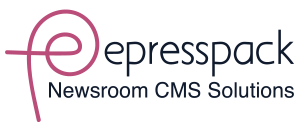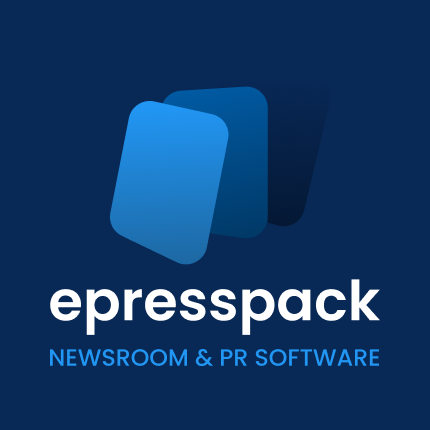
What we remember from the exchanges:
- Comm Directors mainly use social media monitoring to anticipate, evaluate and enhance their communication actions
- Uses outside of the comms are emerging, often within close entities such as customer relationship management or marketing.
- Social Media Monitoring is very dependent on regulatory constraints and restrictions on access to data by social platforms
Reporting of campaigns on social networks, feedback to marketing, communication, and crisis management departments, the uses of social data are varied and widely developed among advertisers. How do the communications departments integrate it into decision-making? What tools are used? How to disseminate its use within other entities?
Measuring the effect of social media campaigns
The communications departments identify the primary use of data from social networks as the measurement of performance and the improvement of their actions. “We have a monthly report which allows us to optimize and correct our actions. The reporting is global and divided by communication channel ”, explains Lucie Dugit-Gros, communication director of CMI France. For APEC, the difficulty is to manage a network of communicators throughout the territory, who are sometimes not very sensitive to the use of these tools. “We use Talkwalker, which allows us to have a statistical and descriptive treatment for monitoring to the brand, especially during the high points of communication: nine fairs and fifty studies that we broadcast throughout the year. The difficulty is that everyone speaks on the subject internally, to amplify the message externally. So for reporting, I limit myself to the overall volume of spinoffs and to the top of interactions by communication channel ”, explains Benoit Martin, social media manager of the Association For the Employment of Managers (APEC)
Pool Monitoring for several entities
But the interest of social data for a brand is also to be part of a more global context and to compare itself to its competitors. In this perspective, the pooling of monitoring on several brands has been put on the table at Adagio ApartHotel (subsidiary of the Accor group). “The Accor group had data for each brand and it was difficult to judge overall whether things were done right. Today, Sprinklr has been chosen as the tool for all brands in the group’s social room, ”said Mathilde Cazeils, communications director of Adagio Aparthotel.
Identify and best manage potential crises
In a context of free and numerous speaking on social networks - employees, customers, competitors, and in the case of HEC students -, these tools become essential to identify, anticipate and limit reputational risks. HEC uses the Digimind tool as a radar to warn of potential crises (two or three identified in the past five years). “We have trained teams at Digimind and we have alert systems on sensitive topics - for example community issues, or related to any form of discrimination - with which HEC can be associated” explains Philippe Oster, director of communications for the school.
Use outside of communication actions?
Like Seb’s communications directorate, who sends identified product feedback on social networks to marketing teams, social data is sometimes used outside the scope of communication actions. At Adagio Aparthotel, interactions on the feedback of information from social networks exist between the communications department and "customer care". “A system has been set up so that negative feedback in private messaging or comments on social networks and rating platforms (TripAdvisor, Booking) is directly transferred back to the managers of the sites concerned”, details Mathilde Cazeils (Adagio Aparthotel ).
“Today, monitoring social networks does not reveal a trend strong enough to change the theme of an event. On the other hand, this gives us a certain reactivity in choosing a speaker or producing a whitepaper around a show ” Bertrand Tostivint (Reed Midem)
Bertrand Tostivint, brand manager of the event company Reed Midem, identifies social networks as a source of information for scheduling conferences and creating content. “Today, monitoring social networks does not reveal a trend strong enough to change the theme of an event. On the other hand, it gives us a certain reactivity in choosing a speaker or producing a whitepaper around a trade show, "he explains. He adds that at Reed Midem, a multi-salon marketing team centralizes digital data, especially on social networks, and produces bi-monthly dashboards and alerts based on the business objectives of the various events. He adds that at Reed Midem, a marketing BU centralizes monitoring social networks and produces dashboards and alerts based on events, which can sometimes be problematic: “The difficulty is to have an answer of this BU in a reduced time frame. I often don’t have the flexibility to change things along the way. ”
For a media group like CMI, social networks are mainly used as a dissemination tool by the communications department. “Some media brands do however keep a competitive watch, which can be very useful for the development of new events”, nuance Lucie Dugit-Gros, Director of corporate, commercial, and internal communication, citing the example of the editorial strategy Fashion Show by Elle magazine.
Social listening dependent on regulatory changes and APIs
The entry into force of the GDPR has been anticipated, and often feared by the communications and marketing departments, in particular regarding the future use of data from their targets and prospects. According to Bertrand Tostivint (Reed Midem), the RGPD had a limited impact on its listening to the social web, but allowed to optimize the quality of the audiences: “the RGPD allowed us to better qualify our contacts. Before we were likely to spam on large campaigns, and today the best data collection allows us to improve engagement and exchanges with customers and prospects: we are targeting people who are interested in what we say ”. An observation shared by Lucie Dugit-Gros (CMI France).
In this logic of user protection, more and more platforms restrict access to their APIs, sometimes making it difficult to measure communication actions. Instagram, for example, has ended likes on posts, which can make it more difficult to assess performance. “We were impacted by the end of the likes on Instagram, which complicates the immediate vision of the success of a post: we no longer know what generates engagement and reach, I am forced to analyze the distribution retrospective content ”, adds Bertrand Tostivint (Reed Midem).
Today, the main difficulty in using social listening among communication departments, therefore, lies in the ability to analyze all environments, new platforms emerge every year - like TikTok recently - to adapt to the regulatory context and policies of these platforms; and learn from it both for the communications department and for other business units.






